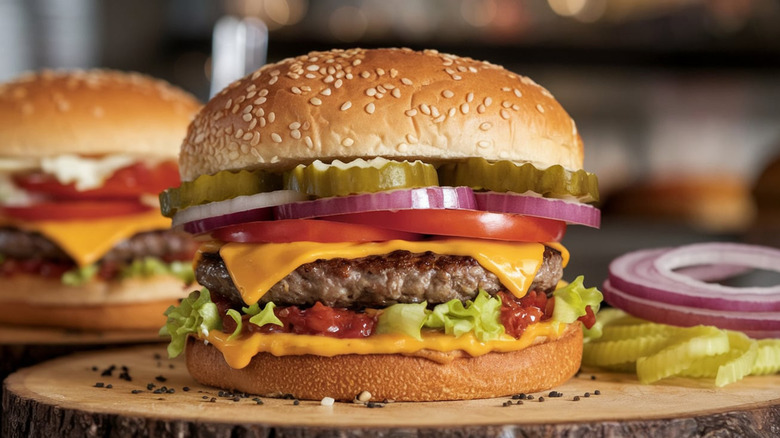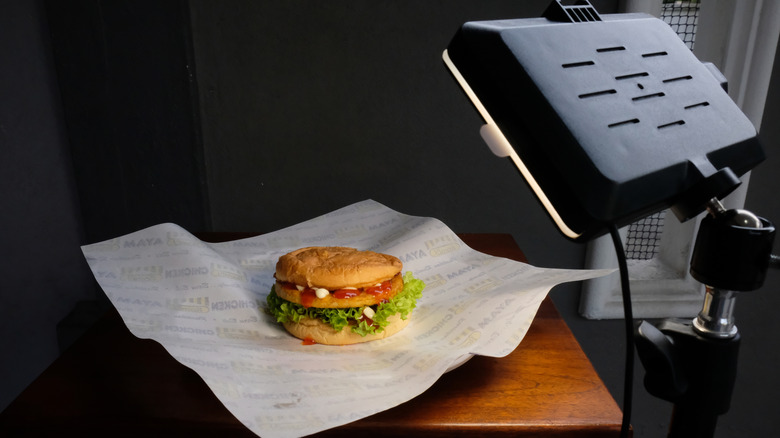The Reason You Could Never Eat The Burgers Used In Commercials
We've all been there. You're watching a show, and a restaurant commercial interrupts. Your mouth waters as a picture-perfect all-beef hamburger invades the screen. Its impeccably grilled patty, gorgeously melted cheese, and crisp veggie toppings seem to absolutely gleam within the fluorescent glow of your television. But trust us when we say you don't want that burger. For real.
As good as it may look, advertisement food is doctored up in ways that render it absolutely inedible. That TV hamburger, for instance, likely has a raw patty that was merely flash-cooked for a few seconds per side and then artificially colored or otherwise touched up to look perfectly grilled. Food stylists only give patties a quick fry so the meat doesn't shrink — that burger needs to look nice and big for its camera closeup. And those beautiful grill marks could very well be shoe polish.
Food stylists sometimes glue the sesame seeds onto buns to achieve perfect placement. Cardboard or other materials may be inserted to keep touched-up patties from sogging the bread, as well as to make the food appear taller. Toppings are strategically stacked and even pinned into place to show up appetizingly on camera, and condiments like ketchup and mustard are carefully inserted via syringes or other devices. Cheese slices get that picture-perfect melt by means of heat guns or other instruments.
Additionally, food styling for a photo shoot takes hours. Even if that advertisement burger had been cooked all the way through — which it wasn't — it wouldn't be safe to eat after sitting out for so long.
Why is food doctoring allowed in advertisements?
Since food advertisements can be undeniably misleading, you may ask why the government doesn't regulate these kinds of practices. Well, it does — in theory. FTC guidelines mandate that "claims in advertisements must be truthful, cannot be deceptive or unfair, and must be evidence-based." However, the loophole that has led to the dismissal of many class action lawsuits against fast-food chains and other food companies hinges on whether the advertisement includes or leaves out a fact in a way that would likely mislead an average, reasonable consumer in that specific context. A reasonable consumer, it has been repeatedly argued, has eaten at these chain restaurants, knows what the real food looks like, and also understands that foods represented in advertisements are manipulated to look as appealing as possible. A reasonable consumer, therefore, has no reason to expect the products ordered at a restaurant will look like the images in commercials.
Still, lawsuits regarding deceptive advertising practices aren't uncommon. A 2024 class action suit against Subway alleged the sandwich giant's ads greatly exaggerate the amount of meat customers actually receive. A 2023 lawsuit against Starbucks brought the coffee chain under fire for falsely advertising fruit content in its drinks. Taco Bell has been similarly sued over the purported contents of its famous beef.
The bottom line is that what you see isn't what you get when it comes to restaurant advertising. The real products may not be as pretty, but they're edible, unlike their advertisement counterparts.


